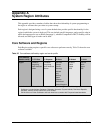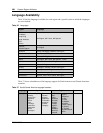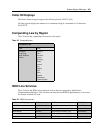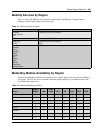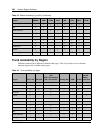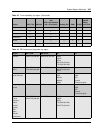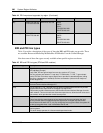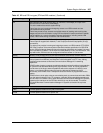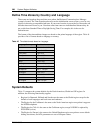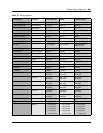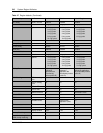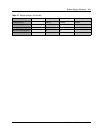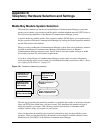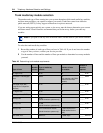
System Region Attributes 307
Installation and Maintenance Guide
PRI ISDN interface with 23 B channels and 1 D channel at 1.544 MBps (in Europe: 30 B
channels and 2 D channels at 2.048 Mbps)
This is the module that controls system timing.
These lines give you incoming and outgoing access to an ISDN network and are
auto-answer trunks, by default.
These lines provide a fast, accurate and reliable means of sending and receiving data,
images, text and voice information. using PRI lines allows for faster transmission speeds
and the addition of a variety of powerful business applications, including remote LAN
access, video conferencing, file transfer and internet access.
BRI ISDN loop that provides both T, S and U2 and U4 (region-specific) reference point loops.
These loops can support both network (T and S loops) and terminal equipment (S loop)
connections.
This type of line provides incoming and outgoing access to an ISDN network. ETSI ISDN
BRI is the European Telecommunications Standards Institute specification for BRI ISDN
service. BRI provides two bearer B-channels operating at 64 kbits/s and a data D-channel
which operates at 16 kbits/s. The D-channel is used primarily to carry call information. Like
loop start trunks, BRI lines can be configured as manual-answer or auto-answer.
DASS2 (British) Trunk provides multi-line IDA interconnection to the British Telecom network.
DPNSS (international term: Q.Sig or Q.931) a digital private network signaling system which allows
phone systems from different manufacturers to be tied together over E1 lines, offering
significant enhancements to Business Communications Manager 2.5 networking
capabilities.
DPNSS makes it easier to support centralized network functionality within private networks,
for operators and attendants dealing with large numbers of calls. Its routing capabilities
provide more of the larger-network capabilities without the expense of installing a new
system, re-configuring all the nodes and worrying about a lot of downtime. Most
functionality over DPNSS lines is transparent once the DPNSS is programmed into the
system.
DPNSS allows a local node, acting as a terminating node, to communicate with other PBXs
over the network using E1 lines. For example, corporate offices separated geographically
can be linked over DPNSS lines to other Business Communications Manager 2.5 systems,
bypassing the restrictions of the PSTNs to which they may be connected. This allows
connected Business Communications Manager 2.5 systems to function like a private
network.
Analog trunk types
Public Provides potential access for any set on the system.
Private Provides potential access for a specific set.
Table 45 BRI and PRI line types (DTM and BRI modules) (Continued)
Digital trunk types Description



